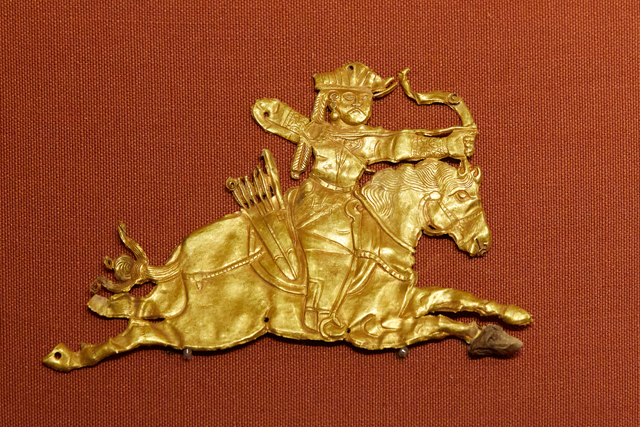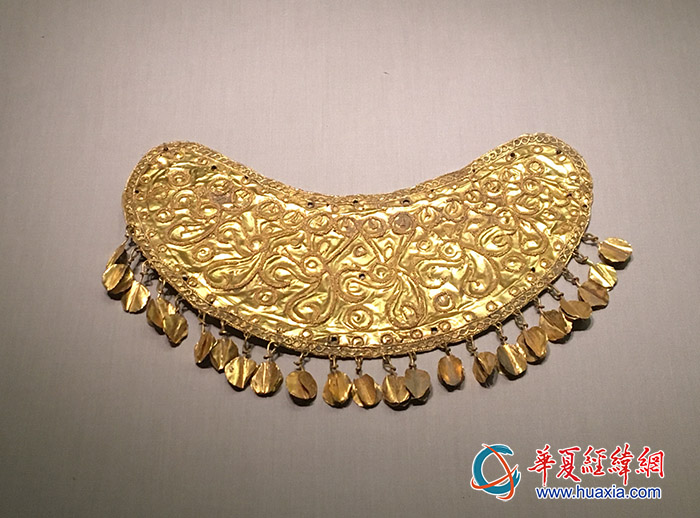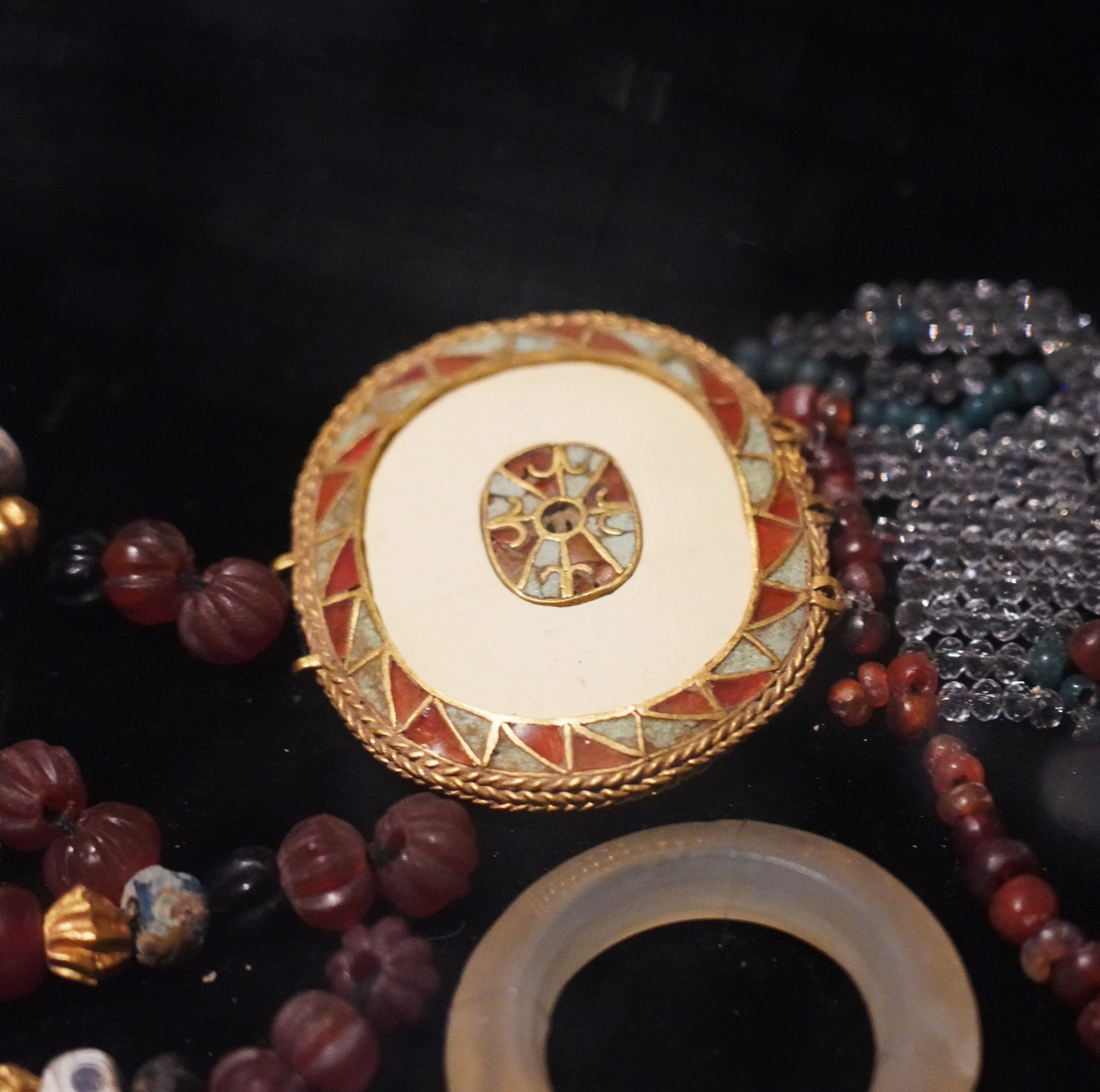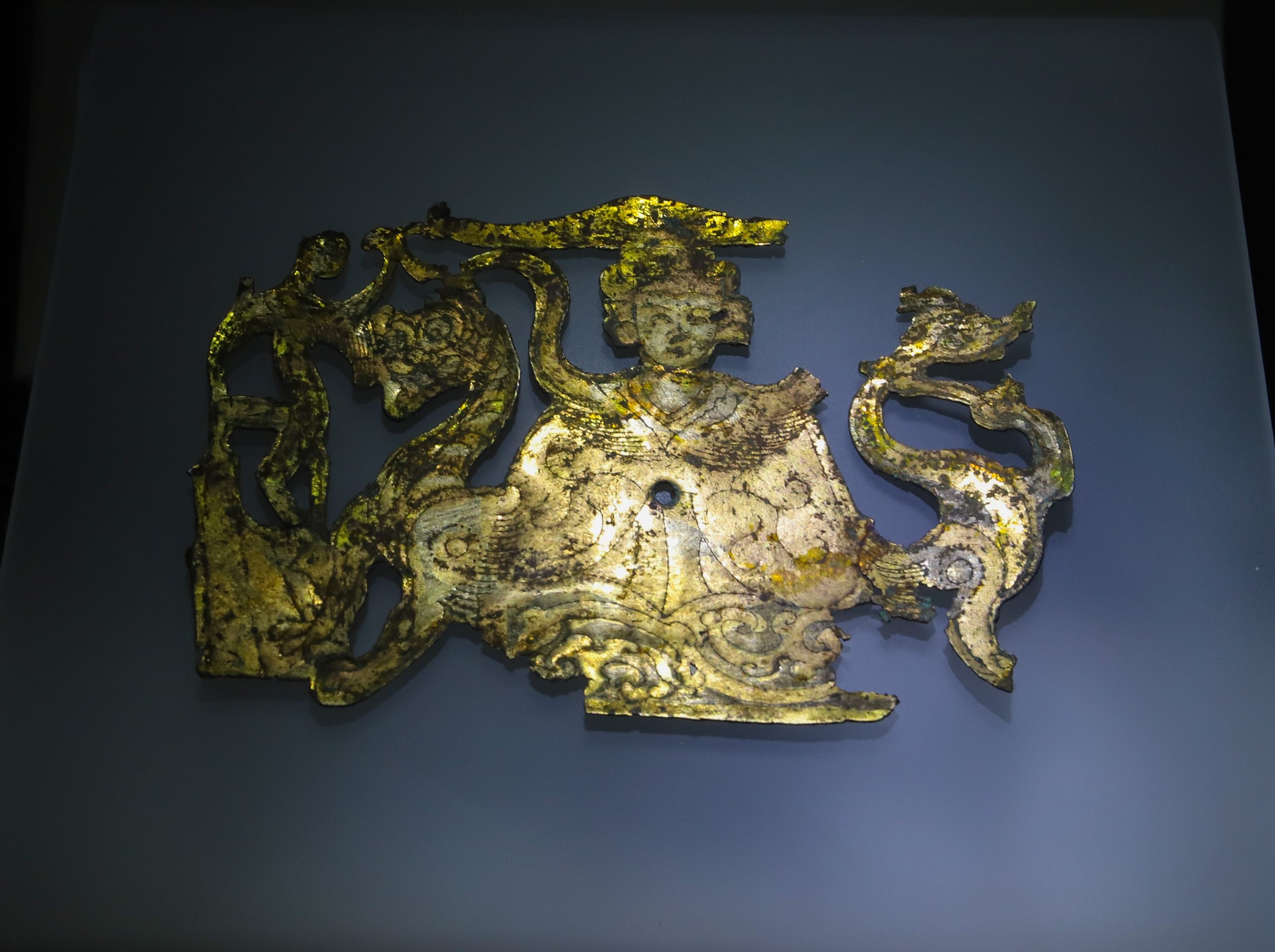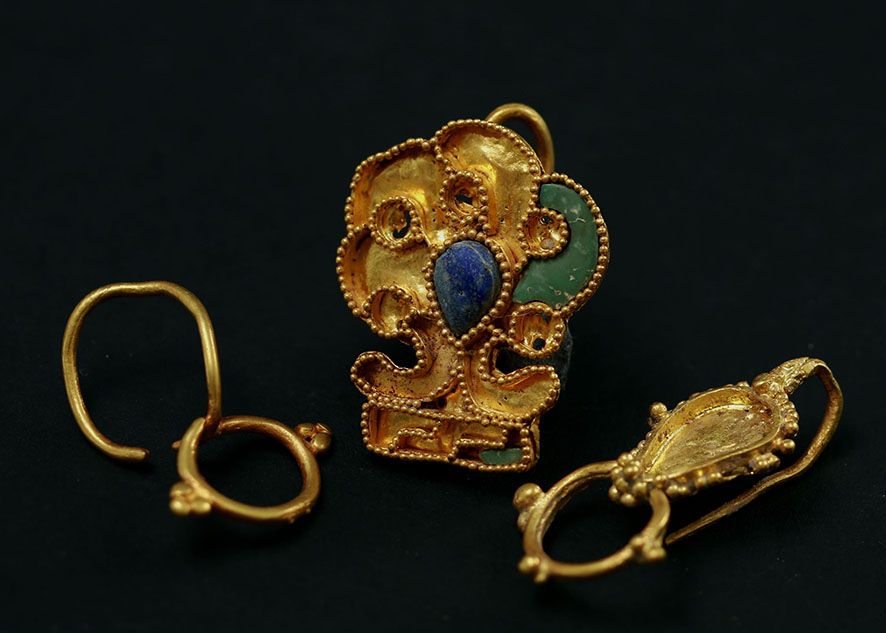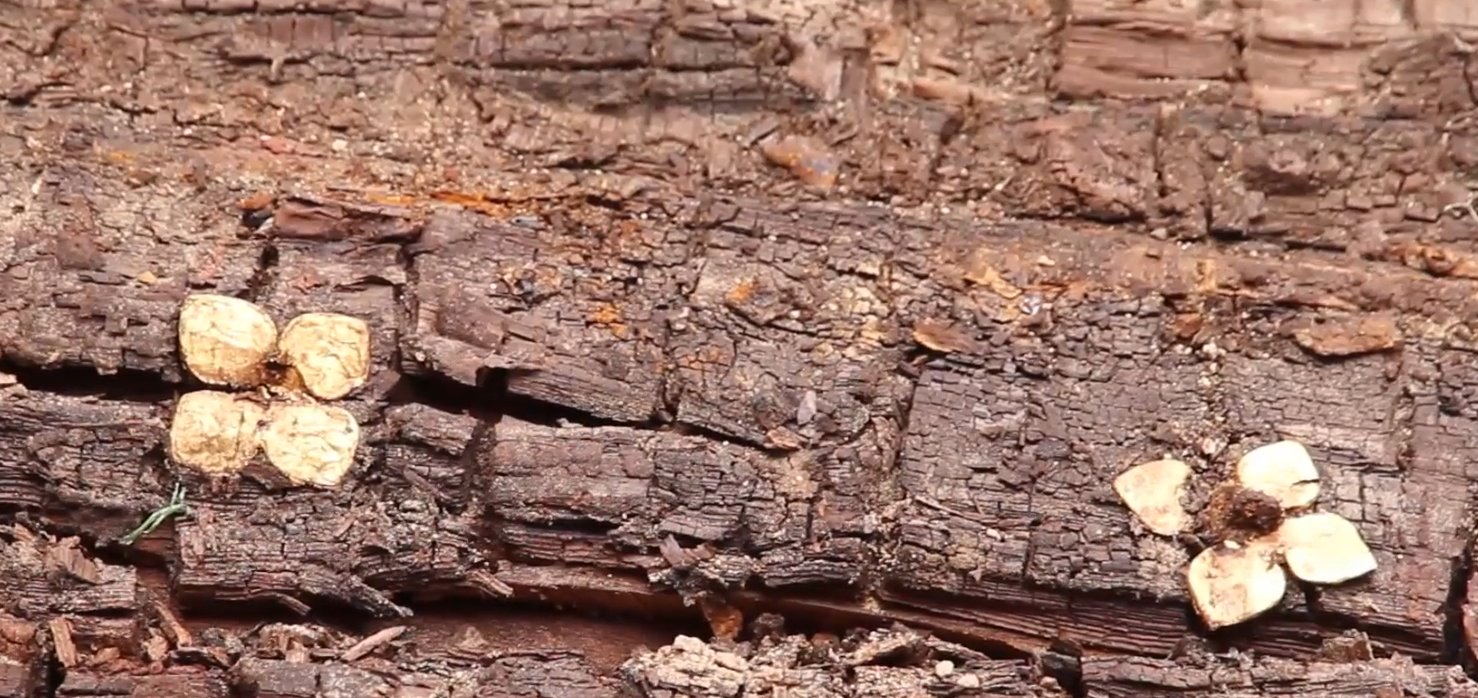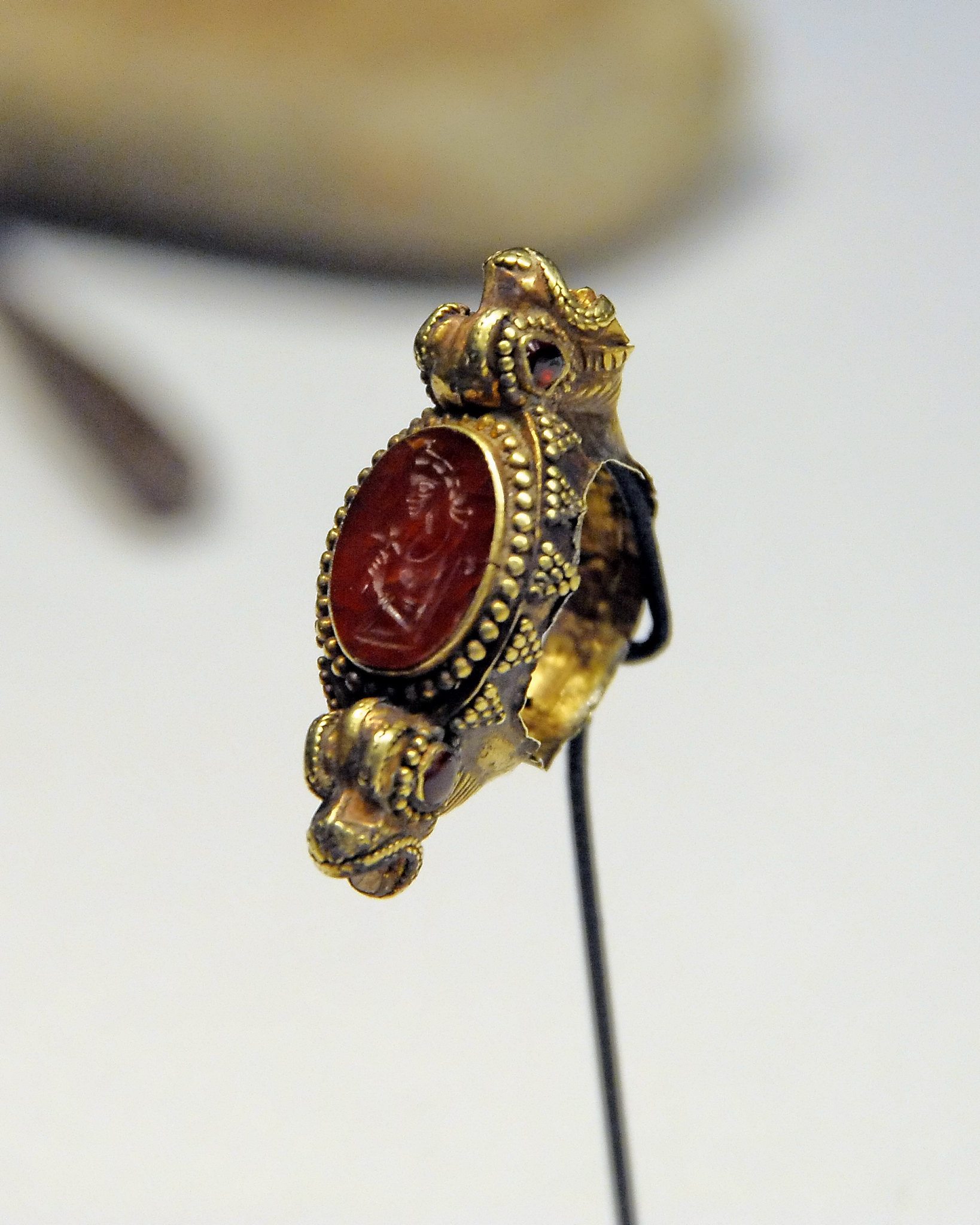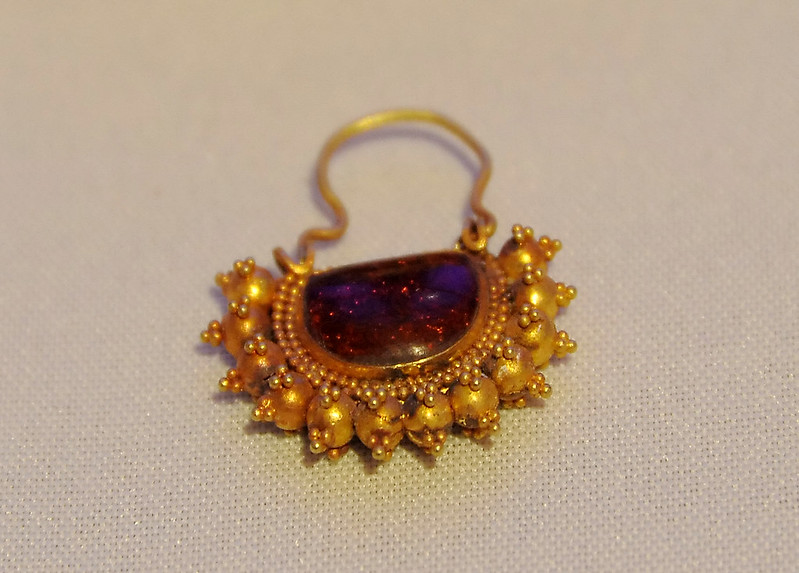

“The gold belt buckle from the collection of Tianshui City Museum is decorated with filigree granules and panchi pattern, is 7.7 cm long, 5.4 cm wide and has 42.7 grams in weight. Using techniques such as filigree and welding beads, the surface is engraved with panchi pattern, and the bottom is round. The buckle is composed of a buckle head and a buckle body. There are two small dragons in the buckle head facing each other on both sides of the tongue and groove of the buckle. The buckle body is decorated with one large dragon and four small dragons. The border is decorated with cord pattern and fringe pattern, and there are 14 small perforations around the outer contour, and a small amount of gold wire remains in one of the small holes. The diameter of the gold wire is about 0.1 mm, which is only equivalent to the thickness of a piece of A4 paper. The gold wire passes through the small hole to perfectly combine the outer layer of gold ornaments with the inner core. Observing the whole utensil, its production method should be chiseled and formed, and then pinched with metal filaments to form a pattern and welded together with gold beads.
To show seven vivid coiled dragons on such a small piece of material, its complex production process and magnificent artistic expression are the embodiment of the superb gold processing skills in the Eastern Han Dynasty.
According to archaeological data, the gold processing skills embodied in this gold buckle were first prosperous in East Asia. With the frequent cultural exchanges on the Silk Road, such gold processing skills were also introduced into China.” (by Guo Jie)


https://collections.artsmia.org

Photo by Vassil https://commons.wikimedia.org

photo taken at the Musee Guimet by PHGCOM https://commons.wikimedia.org
Belt elements decorated with a fantastic animal. 1st-4th century. Reconcile similar elements: dated 1st – 3rd century. Catalog No. 146: Buckle: H. 6.4, L. 9.3 cm. Discovered in Inner Mongolia, in Taohe village, Tumotezuo district, Huhehote municipality. Museum of Inner Mongolia, Huhehot. Exhibition and catalog: Asia of the steppes. From Alexander the Great to Genghis Khan. Barcelona, Paris, Madrid 2000-2001. NMR, ISBN 2-7118-4176-6

https://card.weibo.com/article/
[See an article by Yan Liu]

National Museum of Korea 2018:71 [After Yan Liu]
53,6 g, L. 9.4cm
“This artifact is the pure gold buckle of a belt. Hundreds of small golden bits are pasted to the thin gold plate and its rim is decorated with gold yarn. 53.6g of gold was used to create this buckle. In the center a huge dragon is depicted. Six small dragons crowd around it. The body of the main dragon is depicted with relatively thick golden bits and its nose is exaggerated. Originally, there used to be 41 small, blue jewels between the big and small dragons, but now only seven jewels remain.” [museum description]



Cernuschi Museum, Paris, France
Photo by Guillaume Jacquet wiki
SOURCES
- an article https://www.dpm.org.cn/Uploads/File/2020/07/20/u5f15303a18001.pdf
- Scientific analysis and research of gold buckle with dragon pattern unearthed from Yingchengzi Han tomb in Dalian https://new.qq.com
- Eastern Han Filigree Welded Beaded Panchi Pattern Gold Buckle [2021-12-17] https://www.sohu.com
Article author: Guo Jie, Ministry of Social Services. - On the Metallic Buckle with a Round Front and Square Rear Unearthed in East Asia, by Fang Xiaotian https://ijkh.khistory.org/upload/pdf/Ijkh18-1-02_Fang%20Xiaotian.pdf
- The Han Empire and the Hellenistic World: Prestige Gold and the Exotic Horse, Yan Liu https://www.researchgate.net

